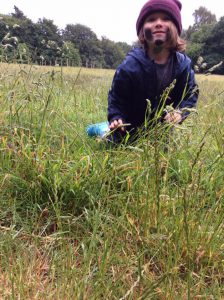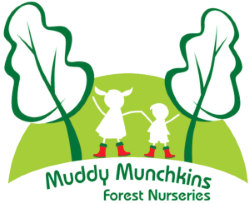Past generations of children (for millennia) have benefited from extended amounts of unsupervised time outdoors, and as adults they look back fondly at these early experiences. Indeed it is widely recognised that such experiences make a positive impact and as adults we are aware that it shaped many aspects of our own development and health. Although the fundamental needs of children have not changed, the current fears among adults about increased levels of traffic and the perceived increase in the threat of child abduction have led to a shift in society’s attitudes towards children’s access to and use of the outdoors. A growing interest in media equipment, such as television, videos and computer games has also contributed to the creation of a society where many children live sedentary lives with few, if any, opportunities to access outdoor spaces or benefit from being outside.

Despite this cultural shift away from outdoor play and learning, it remains essential to children’s health, development and well-being. Consequently, it is vital that early years settings maximise children’s opportunities to be outdoors: for some it may be their only opportunity to play freely and safely outside. Outdoor learning complements indoor learning and is equally important. Play and learning that flow seamlessly between indoors and outdoors enable children to make the most of the resources and materials available to them and develop their ideas without unnecessary interruption. Outdoor learning encompasses all that children do, see, hear or feel in their outdoor space. This includes the experiences that practitioners create and plan for, the spontaneous activities that children initiate, and the naturally occurring cyclical opportunities linked to the seasons, weather and nature.
Why Outdoor Learning is ESSENTIAL
Outdoor learning in early years settings is important because it:
- Supports the development of healthy and active lifestyles
- Encourages the development of language
- Allows children to engage with the world in a more in depth sense, touching it, rolling in it, smelling it, testing it.
- Offers children opportunities for physical activity, freedom and movement
- Promotes a sense of confidence and well-being
- Provides opportunities for developing harmonious relationships with others, through negotiation, taking turns and cooperation
- Supports those children who learn best through activity or movement
- Provides safe and supervised opportunities for children to experience new challenges, assess risk and develop the skills to manage difficult situations;
- Supports children’s developing creativity and problem-solving skills;
- Provides rich opportunities for imagination, inventiveness and resourcefulness;
- Gives children contact with the natural world and offers them unique experiences, such as direct contact with the weather and seasons.
Skills and assets Forest Learners develop:
 Greater Self-esteem and self-belief
Greater Self-esteem and self-belief
Resilience
Independence
Critical thinking
Problem solving
A “can do” attitude
Perseverance
Descriptive language
Assessing Risks
Patience
Tolerance
Strong Immune systems
Empathy and being helpful
Creativity and imagination
Taking responsibility
A lifelong love of nature and the outdoors
Improved confidence
An Investigative nature
Curiosity and intrigue
